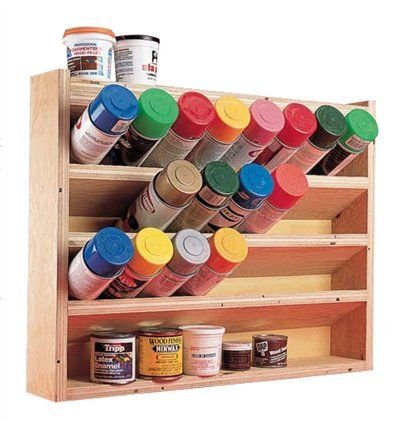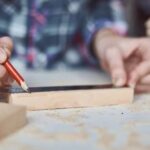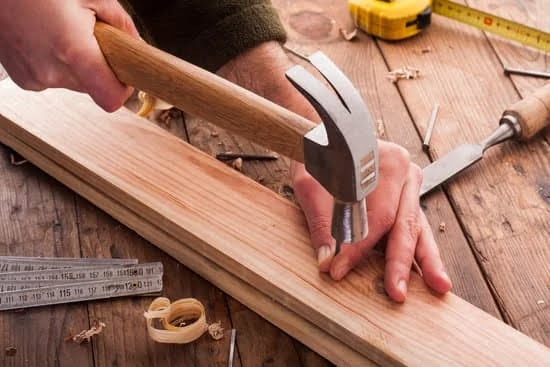Woodworking is a craft that requires precision, creativity, and careful planning. In order to bring a woodworking project to life, it is crucial to have well-thought-out design plans. These plans serve as the blueprint for the project, guiding the woodworker through each step of the process. In this article, we will explore the importance of design plans in woodworking and provide valuable insights on how to create new and innovative design plans for your woodworking projects.
Before diving into the process of creating new design plans, it is essential to understand why design plans are integral to the success of any woodworking project. Design plans not only provide a clear roadmap for construction but also help in visualizing the final product. They allow woodworkers to anticipate any potential challenges and make necessary adjustments before investing time and resources into their projects.
Creating new design plans for woodworking involves familiarizing oneself with various tools and materials that are essential for drafting and sketching. Additionally, drawing inspiration from existing designs and examples plays a crucial role in developing innovative and unique design plans. The process also entails careful measurements, calculations, and incorporating functionality into the designs while preserving aesthetic appeal. By following these key steps, woodworkers can ensure accuracy, efficiency, and effectiveness in their design plans for their woodworking projects.
Getting Started
When it comes to creating new design plans in woodworking, having the right tools and materials is essential to the success of your project. Whether you are a beginner or an experienced woodworker, having the proper equipment will make the process of creating new design plans much easier and more efficient.
Here are some essential tools and materials that you will need to create new design plans for your woodworking projects:
- Sketchbook or graph paper: Having a sketchbook or graph paper on hand will allow you to quickly jot down ideas and make rough sketches of your design plans. This will help you visualize your project and make any necessary adjustments before finalizing your plans.
- Measuring tape and ruler: Accurate measurements are crucial when creating design plans for woodworking projects. A measuring tape and ruler will ensure that your dimensions are precise, resulting in a well-finished product.
- Computer software: Utilizing computer software such as CAD (Computer-Aided Design) programs can be extremely beneficial when creating new design plans. These programs allow you to create detailed and accurate 3D models of your projects, providing a clear visualization of how the finished product will look.
By having these essential tools and materials on hand, you can streamline the process of creating new design plans for your woodworking projects. These resources will not only help you bring your ideas to life but also ensure that your finished project meets all necessary specifications.
Additionally, investing in high-quality tools and materials may require an initial investment, but they are crucial in ensuring the success of your woodworking projects. With the right tools at your disposal, you will be better equipped to create detailed and accurate design plans for all your future endeavors.
Research and Inspiration
When it comes to creating new design plans for woodworking, one of the most crucial steps is finding inspiration and gathering ideas. Whether you are a beginner or an experienced woodworker, seeking out examples and researching different design styles can help spark creativity and enhance your project. Here are some tips on how to find inspiration for your woodworking design plans:
1. Visit woodworking forums and online communities: Engaging with other woodworkers can provide valuable insight and inspiration. Many forums have dedicated sections for sharing design plans, project photos, and ideas.
2. Explore woodworking magazines and books: Reading publications focused on woodworking can expose you to a wide range of design styles, techniques, and projects. Look for specific features that catch your eye and consider how you can incorporate similar elements into your own designs.
3. Attend woodworking workshops or exhibitions: Participating in workshops or visiting exhibitions can expose you to new tools, materials, and methods in woodworking. It’s also an excellent opportunity to network with other craftsmen and gain first-hand exposure to different design approaches.
Incorporating diverse sources of inspiration into your research process can not only expand your knowledge but also ignite fresh ideas for your design plans. By exploring various avenues, you can gather a wealth of concepts that will contribute to the uniqueness of your woodworking projects.
Remember that the key is not to imitate existing designs but rather to draw from them in order to develop something entirely new that reflects your personal style and vision.
Sketching and Drafting
When it comes to woodworking, creating detailed design plans is crucial for a successful project. Sketching and drafting are essential techniques for translating ideas into tangible design plans. Whether you are a beginner or an experienced woodworker, mastering the art of sketching and drafting can make a significant difference in the quality and outcome of your projects.
One of the first steps in sketching and drafting is to have a clear vision of what you want to create. This involves understanding the purpose of the piece, its dimensions, and any specific features or details you want to incorporate. Take the time to brainstorm and visualize how you want your final product to look and function. Once you have a clear idea in mind, you can begin sketching rough outlines and shapes on paper.
After sketching out your initial ideas, it’s important to refine them through drafting. This involves using precise measurements, angles, and proportions to create accurate representations of your design plans. Many woodworkers use drafting tools such as rulers, protractors, and T-squares to ensure that their plans are meticulously detailed and dimensionally accurate.
The key to successful sketching and drafting lies in practicing patience and attention to detail. Don’t be afraid to revise and refine your sketches multiple times before finalizing your design plans. By taking the time to perfect your sketches and drafts, you can ensure that your woodworking projects will be well-executed with minimal errors or miscalculations.
| Woodworking Technique | Description |
|---|---|
| Sketching | Rough outlines and shapes on paper |
| Drafting | Precise measurements, angles, proportions using drafting tools |
Measurements and Calculations
In woodworking, accurate measurements and precise calculations are essential for creating successful design plans. Whether you are building a piece of furniture, crafting a decorative item, or constructing a structure, the success of your project hinges on the accuracy of your design plans. This section will focus on the importance of measurements and calculations in woodworking design, as well as some practical tips for ensuring precision.
When creating new design plans for woodworking projects, it is crucial to start with accurate measurements. Even the smallest miscalculation can lead to significant issues during the construction phase. Therefore, investing in high-quality measuring tools such as tape measures, rulers, and squares is imperative. Additionally, understanding how to read and interpret these measurements is equally important. Incorrectly reading a measurement can throw off an entire project.
Once you have obtained accurate measurements, the next step is to perform precise calculations based on these measurements. This includes calculating angles, proportions, and dimensions to ensure that each component of your design plan will fit together seamlessly. Don’t forget to account for factors such as wood thickness and joinery methods in your calculations. While this may seem tedious, taking the time to double-check your math can save you from costly mistakes later on.
Ensuring accuracy and precision in design plans doesn’t just result in aesthetically pleasing outcomes – it also guarantees structural integrity and functionality in your woodworking projects. By following proper measuring and calculating techniques, you can create design plans that not only look great but also stand the test of time.
| Woodworking Measurement Tools | Importance |
|---|---|
| Tape measure | Accurate measurement |
| Square | Right angles |
| Ruler | Precision in dimension |
Incorporating Functionality
When creating new design plans for woodworking projects, it’s important to find the balance between aesthetics and practicality. A well-designed piece not only looks good but also serves its intended purpose effectively. Incorporating functionality into your woodworking design plans requires careful consideration and thoughtful planning.
Understanding Purpose and Use
Before diving into the details of your design plans, take the time to understand the purpose and use of the woodworking piece you are creating. Are you making a decorative shelf, a sturdy table, or a functional cabinet? Consider how the piece will be used in everyday life and what features are necessary to make it practical for its intended use. Understanding these factors will guide you in incorporating functionality into your design plans.
Material Selection and Durability
The choice of materials is crucial in ensuring the functionality of your woodworking project. Consider durability, strength, and stability when selecting wood for your piece. Different woods have various properties that can impact the overall functionality of the finished product. Additionally, think about how different finishes or treatments can enhance not only the appearance but also improve the durability and usability of the piece.
Ergonomics and User Experience
Another essential aspect of incorporating functionality into your design plans is considering ergonomics and user experience. Pay attention to dimensions, proportions, and usability to ensure that the finished piece is comfortable and efficient to use. This may involve creating mock-ups or prototypes to test out different designs before finalizing your woodworking design plans.
By carefully considering these factors when creating new design plans for woodworking projects, you can ensure that your finished pieces are not only visually appealing but also practical and functional for their intended use. Balancing aesthetics with practicality will result in well-crafted pieces that are both beautiful and useful.
Testing and Revising
As you move forward with creating new design plans for woodworking, it’s important to test and revise your plans to ensure they are efficient and effective. This step in the process is crucial to producing high-quality woodworking projects that not only look great but also function well. Here are some key considerations for testing and revising your design plans.
Material Selection and Durability
One of the first things you’ll want to test in your design plans is the material selection. Whether you’re using hardwood, softwood, or engineered wood products, it’s important to ensure that the chosen materials are durable and suitable for the intended use of the woodworking project. Consider factors such as strength, stability, and resistance to wear and tear when evaluating material options for your design plans.
Structural Integrity and Safety
Another critical aspect to test in your design plans is the structural integrity and safety of the finished product. This involves ensuring that the joinery techniques, fasteners, and overall construction of the woodworking project are sound and capable of supporting the intended load. Additionally, consider any safety concerns such as sharp edges, protruding hardware, or unstable components that may pose a risk to users.
Functionality and Ergonomics
Finally, testing the functionality and ergonomics of your design plans is essential for creating a practical and user-friendly woodworking project. Consider how people will interact with the finished piece and whether it meets their needs in terms of comfort, convenience, and usability. If necessary, make revisions to improve the functionality and ergonomics of your design plans based on feedback from potential users or ergonomic guidelines.
By thoroughly testing and revising your design plans for efficiency and effectiveness, you can ensure that your woodworking projects meet high standards of quality while also serving their intended purpose. Incorporating these steps into your process will ultimately lead to more successful outcomes in your woodworking endeavors.
Conclusion
In conclusion, creating new design plans for woodworking requires careful consideration and thorough planning. By understanding the importance of design plans in woodworking, enthusiasts can take the necessary steps to ensure their projects are not only visually appealing but also functional and practical. By following the tips outlined in this article, woodworkers can create new design plans that bring their ideas to life.
One of the most important aspects of creating new design plans is conducting thorough research and finding inspiration from examples. This process allows woodworkers to gather ideas and techniques that can be applied to their own projects, leading to more innovative and unique designs. Additionally, sketching and drafting techniques are crucial for translating these ideas into detailed design plans, ensuring that every aspect of the project is carefully planned out.
Furthermore, incorporating functionality into design plans is essential for achieving a balance between aesthetics and practicality. By paying attention to measurements and calculations, woodworkers can ensure accuracy and precision in their design plans, resulting in successful and efficient projects.
Lastly, by testing and revising the design plans as needed, woodworkers can fine-tune their creations for optimal efficiency and effectiveness. With these tips in mind, enthusiasts will be better equipped to create new design plans for their woodworking projects with confidence and success.
Frequently Asked Questions
Are Woodworking Plans Copyrighted?
Yes, woodworking plans can be copyrighted just like any other creative work. The person who creates the plans holds the copyright and others must seek permission to use or reproduce them.
Is SketchUp Good for Woodworking?
SketchUp is a popular and versatile tool for woodworking. It allows woodworkers to create detailed 3D models of their projects, visualize designs, and make precise measurements. Many woodworkers find it useful for planning and executing their projects.
What Woodworking Project Is Most Profitable?
The profitability of woodworking projects can vary depending on various factors such as materials, labor, and market demand. However, some of the most profitable woodworking projects include custom furniture pieces, kitchen cabinets, and specialty wooden items like cutting boards or serving trays. It also depends on the individual skill and craftsmanship of the woodworker.

Hi everyone! I’m a woodworker and blogger, and this is my woodworking blog. In my blog, I share tips and tricks for woodworkers of all skill levels, as well as project ideas that you can try yourself.





